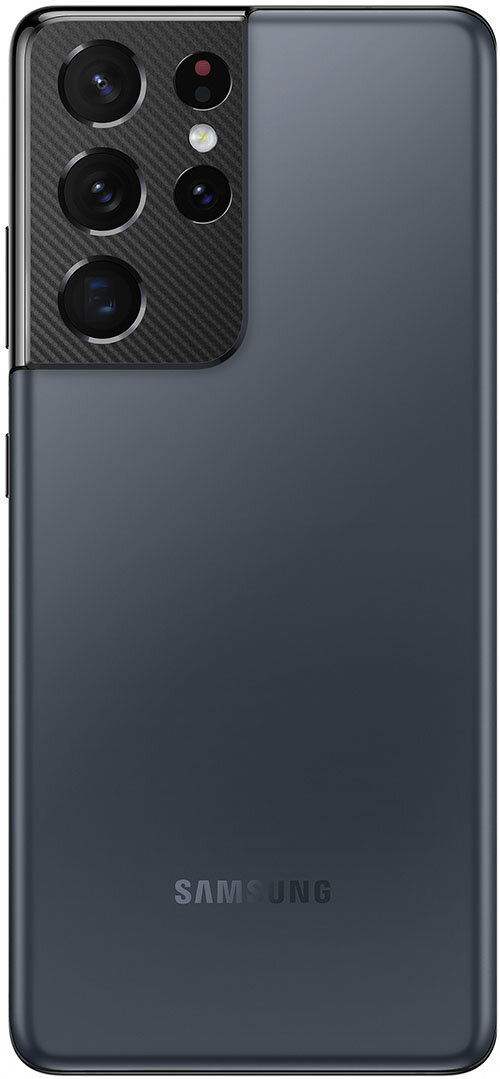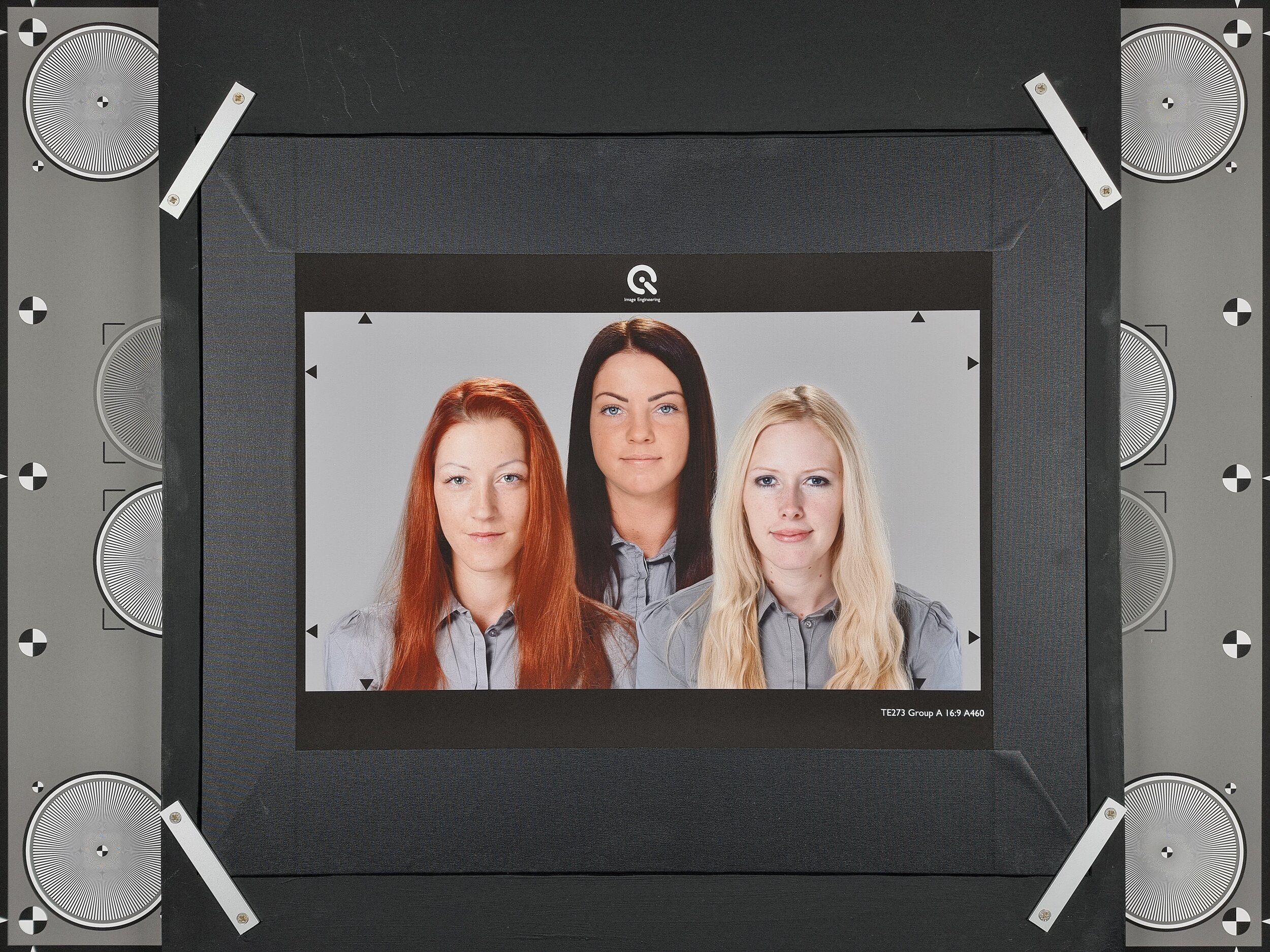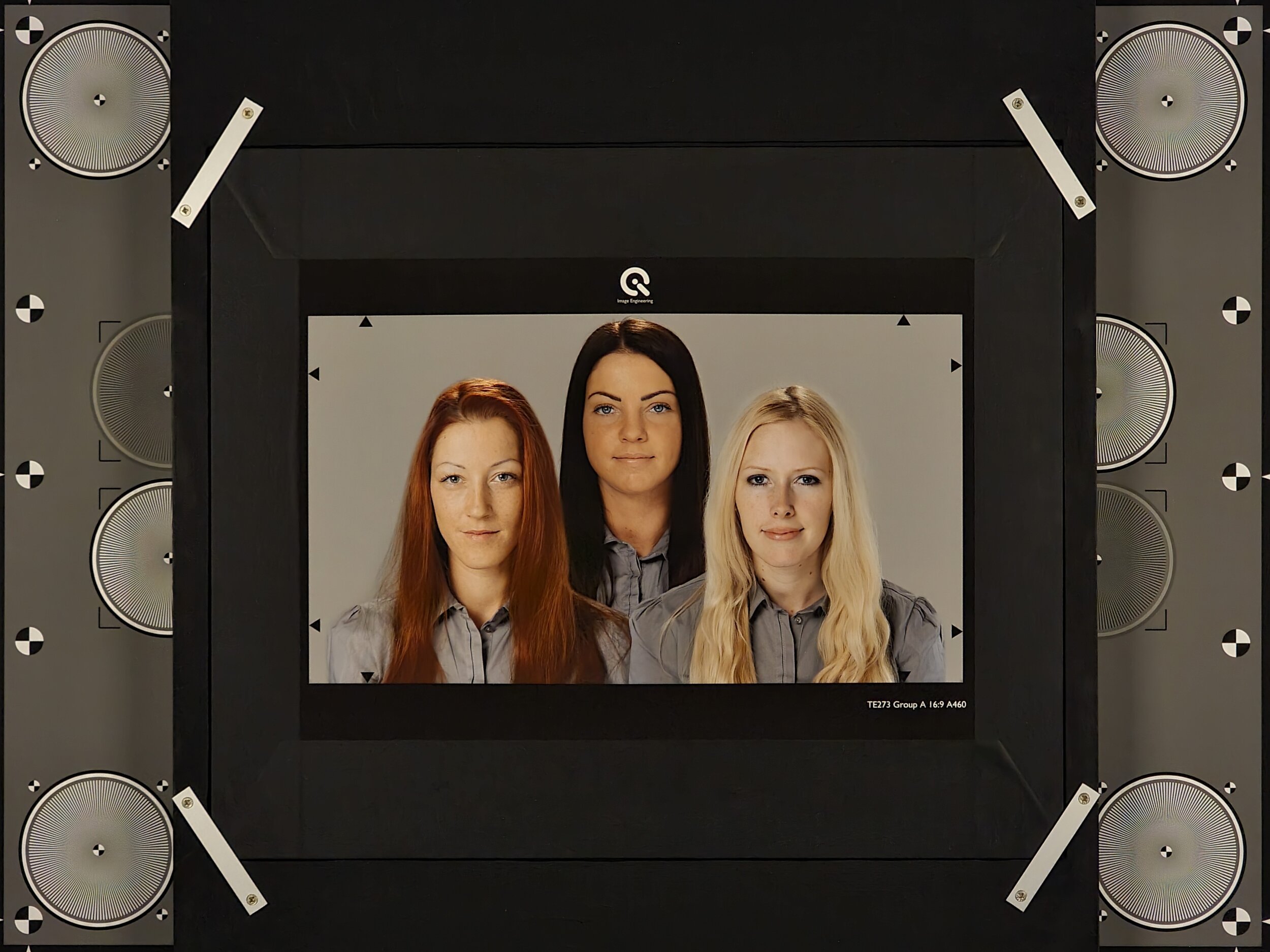Overall, the S21 Ultra is one of the best current photo smartphones. In bright light, the 108 megapixels of the main camera deliver impressive image quality. When it gets darker, we recommend 12 MP images. The 3x telephoto and super-wide-angle modules are also very usable. In contrast, the optical 10x telephoto and the digital 2x zoom are among the weaker sides. Beyond that, we noticed very hard signal processing almost throughout - less would be more here.
Wide angle (main camera) – 1.8/7 mm lens
(full-frame equivalent: 26 mm),
108 MP sensor, JPEG with 12 or 108 MP
The main camera is a wide-angle module with an aperture of 1.8, 7 mm focal length (full-frame equivalent: 26 mm) and 108 megapixels. Since nine pixels of the same color always belong to one block (Nonacell technology), it offers 12 megapixels as standard resolution, but can switch to 108 megapixels. A 108 megapixels Sensor is also used in the S20 Ultra, but Samsung has optimized the signal processing. The rating of the wide-angle camera is therefore no longer based on 12-megapixel pictures, but on 108-megapixel files. This makes the main camera the second-best camera in all tests so far. Second best because it can only show the superiority of its 108 megapixels in situations with a lot of light. Besides the sheer resolution and thus far finer detail drawing, the gentler signal tuning is noticeable. Samsung applies less aggressive sharpening and edge distribution to the 108-megapixel images than to 12-megapixel shots - the former look more natural. However, very complex structures can lead to problems with 108 MP. As the light fades, the 108-megapixel JPEGs degrade faster than the 12-megapixel shots. Some fine structures are lost - this is not least a consequence of the noise reduction.
Normal focal length – 1.8/7 mm lens
(full-frame equivalent: 52 mm), 108 MP sensor, JPEG with 12 MP
We test a 2x zoom in every smartphone, here it is a digital one based on the main camera and you get 12MP photos. But the image quality is significantly lower, the pictures show less fine detail across all light levels. Apparently, the Nonacell sensor structure with its large blocks of nine makes it difficult to zoom digitally.
Tele lenses – 2.4/9 mm (full-frame equivalent: 70 mm),
10 MP sensor, JPEG with 12 MP /
4.9/31 mm (full-frame equivalent: 240 mm),
10 MP sensor, JPEG with 12 MP
Samsung installs two telephoto cameras with focal lengths of 70 and 240 millimeters (full-frame values). This is very clever because all zoom levels up to 240 mm would have to be generated digitally by the main camera if only the very long telephoto was available. This would lead to a very sharp drop in performance. Although both telephoto modules work with 10-megapixel sensors, you get JPEGs with 12 megapixels - so the data is moderately upsampled. Our telephoto rating is based on the better test result of the triple zoom 2.4/9 mm (full-frame equivalent: 70 mm) - one of the best telephoto modules currently available. Of course, with its smaller sensor, it does not deliver the detail reproduction of the wide-angle. However, the Samsung-typical aggressive signal tuning is more disturbing. It makes the picture crisper, but also more unnatural. As the light fades, the signal processing still keeps noise and annoying artifacts in check well. Nevertheless, the details decrease. A 240 mm telephoto (full-frame value) in a smartphone is impressive, but shows its pitfalls in practice. Despite the image stabilizer, a picture is quickly blurred. The light intensity of F4.9 also requires longer exposure times. This in turn leads to more camera shake or forces a higher ISO sensitivity, which causes more noise and swallows up details. In the lab, the telephoto with 4.9/31 mm shows a lower detail resolution than the other cameras even in high light. The module does not adequately reproduce many structures at the level of a 10 MP sensor, even under favorable conditions. Noise is not yet an issue, and artifacts do not disturb the image impression much either. However, the latter quickly increase as soon as the brightness decreases. At the same time, this reduces the resolution even more. We recommend using the long tele only in very bright light.
Super wide angle – 2.2/2 mm lens
(full-frame equivalent: 13 mm), 12 MP sensor, JPEG with 12 MP
The super-wide-angle camera with a 12-megapixel sensor and 2.2/2 mm seems to be the same as in the S20 Ultra. However, Samsung has improved the signal processing a bit - with advantages in high light. The camera does not reach the quality level of Huawei's Mate 40 Pro, but it can completely convince overall. The signal processing of the S21 Ultra works harder, and night shots are not as well rectified as in the S20 Ultra. We measured a higher resolution throughout and less noise and artifacts at the same time. The veil that was so annoying in the S20 Ultra has disappeared. When the light decreases, the signal processing still ensures sharp edges, but the image becomes less clear and the noise reduction algorithms destroy fine structures. We do not recommend the super-wide-angle for night shots.
click to enlarge
|
Device |
Samsung Galaxy S21 Ultra 5G |
|
Average market price |
1300 Euro |
|
Functionality |
|
|
Image formats |
JPEG, RAW |
|
Focusing |
Phase-, Laser-AF |
|
ISO sensitivity |
ISO auto, man: 50-3200 |
|
Exposure control |
Auto, Time Shift, M |
|
Shutter speed, Exposure correction |
auto, man: 1/12000-30 s, ±2 f-stops |
|
White balance |
auto, Kelvin |
|
Features |
|
|
Display |
AMOLED, 6,8", 3200 x 1440 Pixels |
|
Internal memory, Memory card, USB |
256 GB, –, USB 3.2 Gen 1 Type C |
|
Video |
3840 x 2160 Pixels, 60 F/s |
|
Size, Weight, Battery capacity |
165 x 76 x 9 mm, 229 g, 5000 mAh |
|
Test results |
|
|
measured at |
5000 | 200 | 5 Lux |
|
Wide angle (main lens) |
|
|
5000 Lux - Lens, Res., ISO, Exposure |
1,8/6,7 mm, 12000 x 9000 Px, ISO 0, 9 ms |
|
200 Lux - Lens, Res., ISO, Exposure |
1,8/6,7 mm, 12000 x 9000 Px, ISO 250, 20 ms |
|
5 Lux - Lens, Res., ISO, Exposure |
1,8/6,7 mm, 12000 x 9000 Px, ISO 1250, 71 ms |
|
Image stabilization |
IS |
|
Resolution Center High/Low (LP/IH) |
3415 / 2352 | 2590 / 1543 | 1445 / 990 |
|
Resolution Edge High/Low (LP/IH) |
2669 / 1915 | 1975 / 1326 | 1186 / 825 |
|
Resolution Corners High (LP/IH) |
2483 | 1690 | 1015 |
|
Dead leaves High/Low (LP/IH) |
1283 / 1082 | 998 / 852 | 549 / 288 |
|
Artefacts High/Low |
39 / 35 | 39 / 54 | 48 / 64 |
|
Noise (VN)/Color accuracy (deltaE) |
2,4 / 12,4 | 2,4 / 9,9 | 1,9 / 13,7 |
|
Distortion (%)/Vignetting (%) |
0,4 / 23 | 0,4 / 29 | 0,4 / 56 |
|
Points |
93,5 | 75,3 | 43,1 |
|
Score Wide angle lens |
99 |
|
Normal lens (2x zoom) |
|
|
5000 Lux - Lens, Res., ISO, Exposure |
1,8/6,70 mm, 4000 x 3000 Px, ISO 50, 8 ms |
|
200 Lux - Lens, Res., ISO, Exposure |
1,8/6,70 mm, 4000 x 3000 Px, ISO 200, 20 ms |
|
5 Lux - Lens, Res., ISO, Exposure |
1,8/6,70 mm, 4000 x 3000 Px, ISO 1600, 91 ms |
|
Image stabilization |
IS |
|
Resolution Center High/Low (LP/IH) |
844 / 673 | 755 / 671 | 573 / 506 |
|
Resolution Edge High/Low (LP/IH) |
733 / 635 | 698 / 609 | 576 / 497 |
|
Resolution Corners High (LP/IH) |
723 | 703 | 549 |
|
Dead leaves High/Low (LP/IH) |
639 / 631 | 615 / 582 | 342 / 269 |
|
Artefacts High/Low |
20 / 24 | 23 / 28 | 18 / 14 |
|
Noise (VN)/Color accuracy (deltaE) |
1,7 / 11,7 | 2 / 10,3 | 1,2 / 12,6 |
|
Distortion (%)/Vignetting (%) |
0,6 / 12 | 0,5 / 14 | 0,5 / 23 |
|
Points |
43,7 | 42,7 | 22,2 |
|
Score Normal lens (2x zoom) |
51 |
|
Tele lens |
|
|
5000 Lux - Lens, Res., ISO, Exposure |
2,4/9,00 mm, 4000 x 3000 Px, ISO 50, 6 ms |
|
200 Lux - Lens, Res., ISO, Exposure |
2,4/9,00 mm, 4000 x 3000 Px, ISO 320, 30 ms |
|
5 Lux - Lens, Res., ISO, Exposure |
2,4/9,00 mm, 4000 x 3000 Px, ISO 2500, 250 ms |
|
Image stabilization |
IS |
|
Resolution Center High/Low (LP/IH) |
1483 / 1198 | 1316 / 1054 | 914 / 793 |
|
Resolution Edge High/Low (LP/IH) |
1325 / 1140 | 1212 / 986 | 895 / 724 |
|
Resolution Corners High (LP/IH) |
1304 | 1191 | 877 |
|
Dead leaves High/Low (LP/IH) |
803 / 943 | 818 / 683 | 557 / 435 |
|
Artefacts High/Low |
39 / 37 | 35 / 41 | 19 / 20 |
|
Noise (VN)/Color accuracy (deltaE) |
2 / 12,8 | 2,1 / 10,4 | 1,4 / 11,5 |
|
Distortion (%)/Vignetting (%) |
0,1 / 16 | 0,1 / 18 | 0,1 / 17 |
|
Points |
67 | 61 | 47,2 |
|
Score Tele lens |
81 |
|
Super wide angle lens |
|
|
5000 Lux - Lens, Res., ISO, Exposure |
2,2/2,20 mm, 4000 x 3000 Px, ISO 50, 6 ms |
|
200 Lux - Lens, Res., ISO, Exposure |
2,2/2,20 mm, 4000 x 3000 Px, ISO 320, 30 ms |
|
5 Lux - Lens, Res., ISO, Exposure |
2,2/2,20 mm, 4000 x 3000 Px, ISO 2500, 250 ms |
|
Image stabilization |
|
|
Resolution Center High/Low (LP/IH) |
1695 / 1258 | 1485 / 1204 | 983 / 857 |
|
Resolution Edge High/Low (LP/IH) |
1402 / 1166 | 1254 / 1018 | 931 / 755 |
|
Resolution Corners High (LP/IH) |
1122 | 1041 | 770 |
|
Dead leaves High/Low (LP/IH) |
969 / 895 | 932 / 808 | 653 / 533 |
|
Artefacts High/Low |
20 / 23 | 25 / 28 | 17 / 22 |
|
Noise (VN)/Color accuracy (deltaE) |
1,2 / 13,0 | 1,6 / 10,2 | 1,5 / 10,9 |
|
Distortion (%)/Vignetting (%) |
0,2 / 27 | 0,2 / 35 | 1,1 / 68 |
|
Points |
67,3 | 59,9 | 39,7 |
|
Score Super Wide angle lens |
76 |
|
Score 5000 | 200 | 5 Lux |
88 | 78 | 49 |
|
Overall score camera qb |
77 |
Samsung Galaxy S21 Ultra 5G
77
very good
SAMPLE PHOTOS
Wide angle (main camera) – 1.8/7 mm lens (12 MP JPEGs)
Full Light (5000 Lux)
Low Light (200 Lux)
Night Shot (5 Lux)
Normal focal length – 1.8/7 mm lens (12 MP JPEGs)
Full Light (5000 Lux)
Low Light (200 Lux)
Night Shot (5 Lux)
Tele lens – 2.4/9 mm (12 MP JPEGs)
Full Light (5000 Lux)
Low Light (200 Lux)
Night Shot (5 Lux)
Super wide angle – 2.2/2 mm lens (12 MP JPEGs)
Full Light (5000 Lux)
Low Light (200 Lux)
Night Shot (5 Lux)














